How to Make Crock Pot Yogurt
If you are looking to increase the repertoire in your from scratch kitchen, this easy crock pot yogurt is a great place to start. This highly nourishing, probiotic-rich food is so simple to make. It requires only two basic ingredients, a crock pot, and a few minutes of time. Give this easy, homemade crock pot yogurt a try and you will never want to go back to buying it at the grocery store.
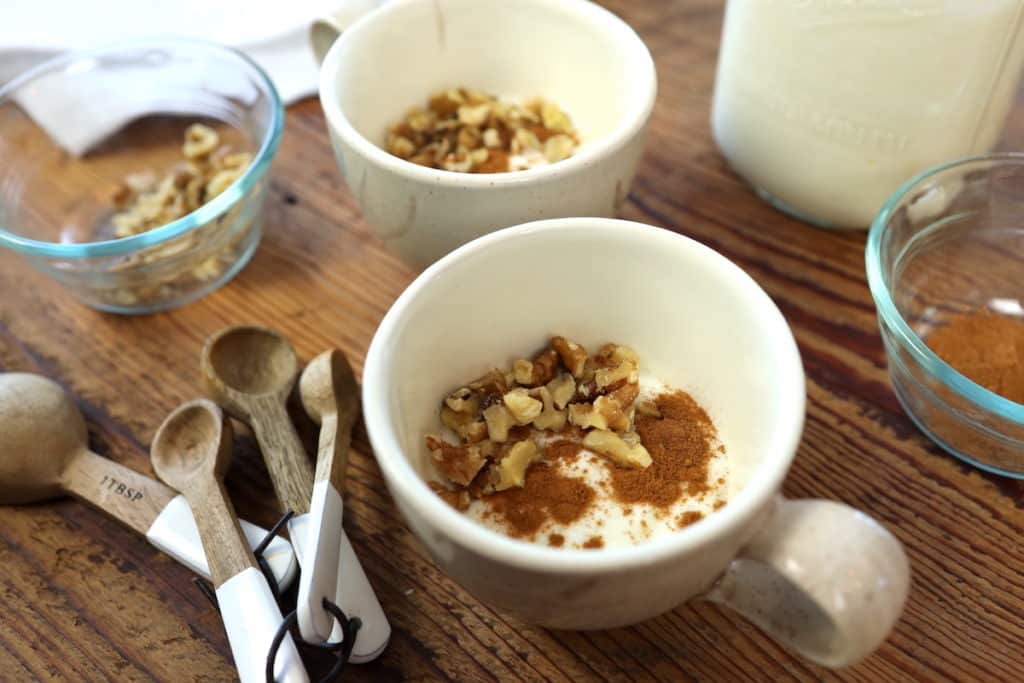
Almost 10 years ago when I overnight decided to toss everything in our fridge, freezer, and pantry for unprocessed and real food alternatives, this yogurt was one of my first big homemade wins. You can read more about that journey here. I was amazed to discover how easy making my own crock pot yogurt at home was. For most of my life, yogurt had been a staple breakfast food so learning that I could easily make it myself was a game changer.
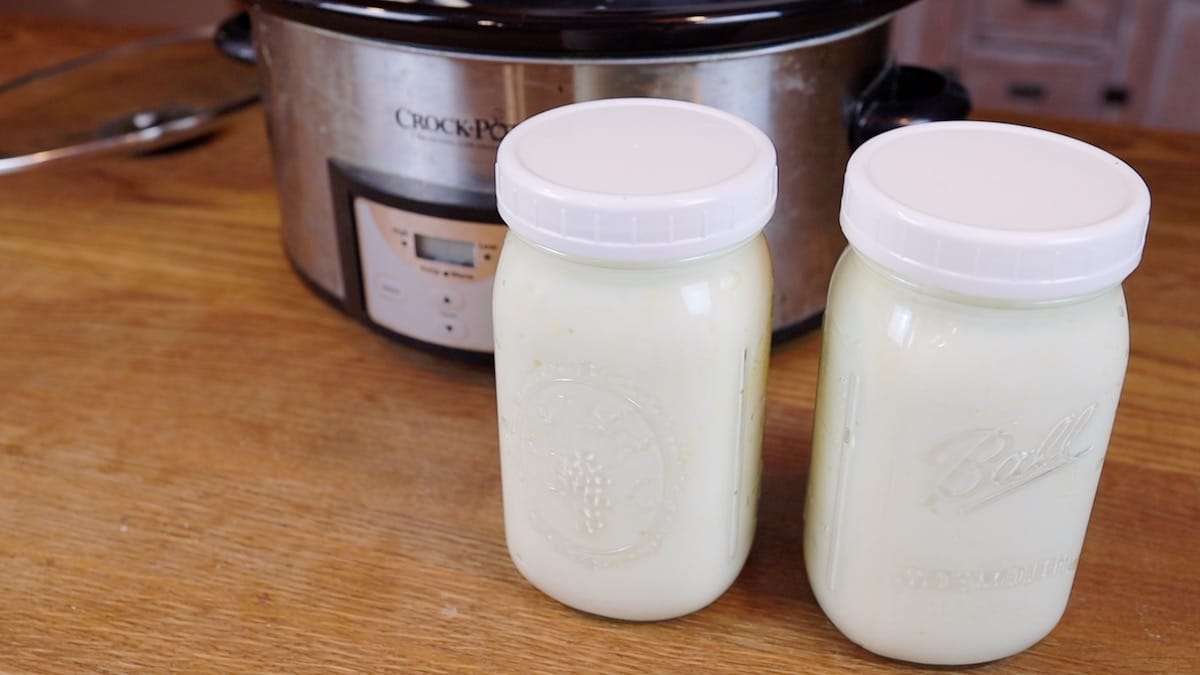
Why make your own yogurt?
- You get to be in control of what’s in it. Those sneaky food producers go out of their way to throw things in food that really have no place being there. Sweeteners, thickeners, stabilizers, flavor enhancers, you name it. If they think it will make the food better, they throw it in, regardless of what it means for your health. Yogurt should only have 2 ingredients. Milk and live and active cultures. Making it yourself means you pick what milk you use. Like it sweetened? You can add your own honey, maple syrup, or fruit.
- Cost-effective. You can make a half gallon of yogurt for the same cost as a ½ gallon of milk. At the store, this much yogurt would go for at least twice that amount, and the yogurt you will make will likely be better quality!
- Eliminates single-use plastics. For years I bought those single-serving yogurt cups. Not only is this extremely cost ineffective, it also creates so much unnecessary waste and potential for plastic leaching into your food. When you make it yourself, store it in glass mason jars and you are good to go.
- Support Local! If you have a local dairy or place where you can find milk locally, this is a great way to support local farms as opposed to the milk from large-scale conventional farms that are used to make most store-bought yogurt.
How to make yogurt?
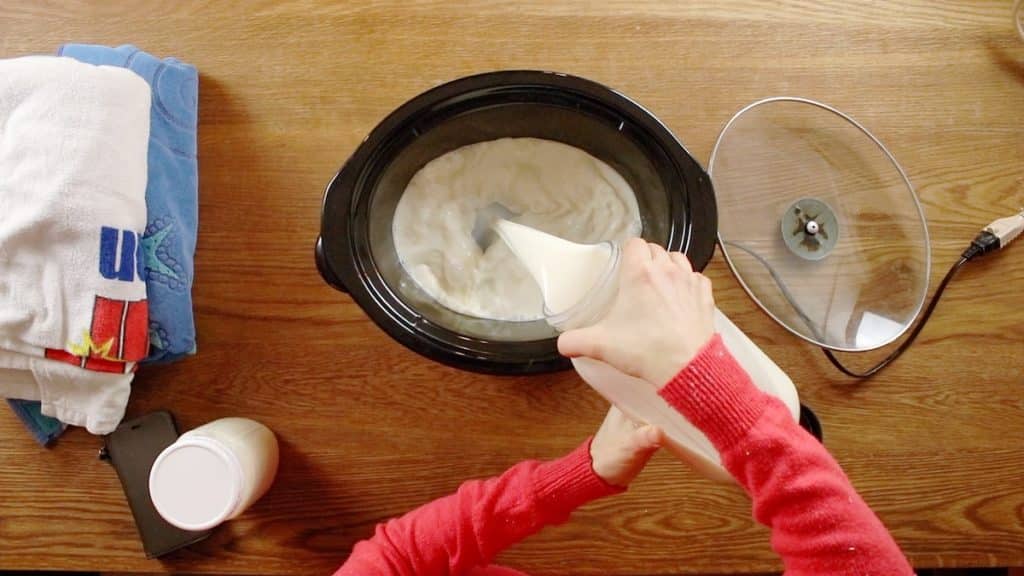
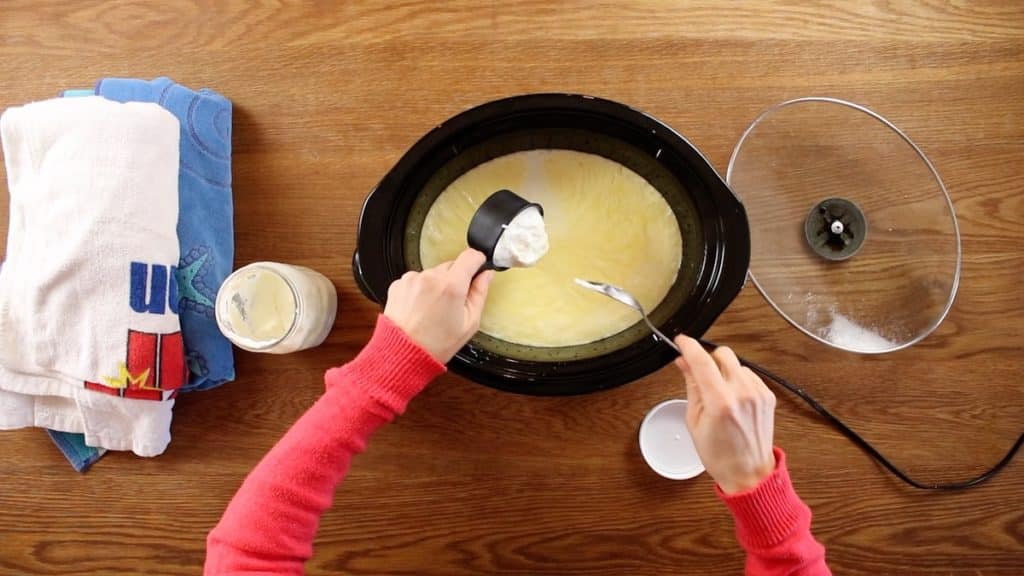
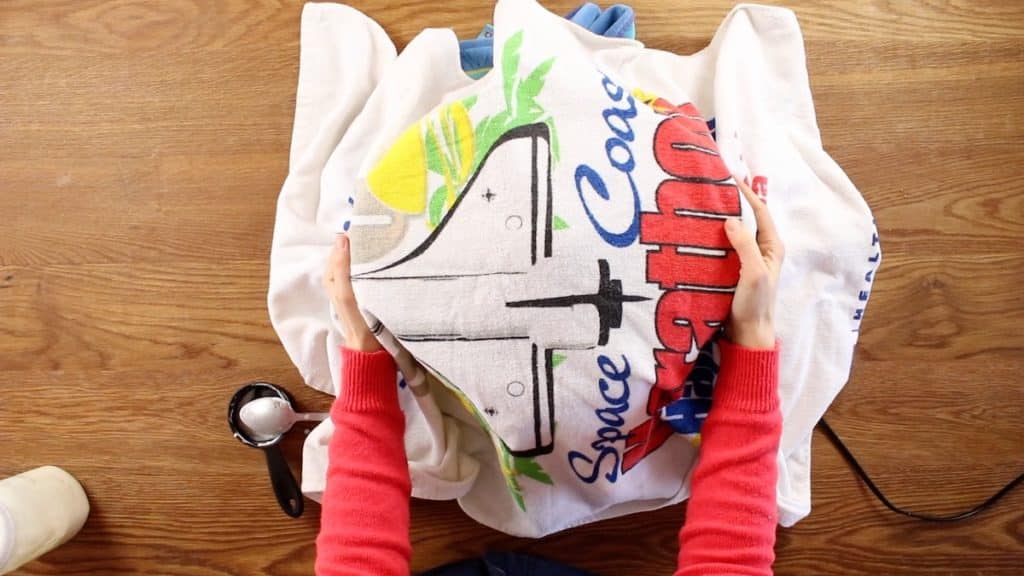
Like other fermented foods, the process of making yogurt involves heating milk to a certain temperature and introducing live and active cultures. Then, let them hangout together for a while so those healthy, gut healing bacteria can multiply. And that’s it – you’ve made your own yogurt. Bonus, doing this in a crock pot makes it so easy because all of those times and temperatures have been tested and proven.
Yogurt Frequently Asked Questions
Do I need a thermometer or other special equipment?
NO! That’s what I love about this method. There are a lot of ways to make yogurt and most require monitoring temperatures and keeping your milk incubating at a certain temperature. With this crock pot yogurt method, the times of heating and sitting have already been tested and proven to get those temperatures exactly where they need to be so that no temperature checking is required.
What do I use as my starter culture?
Your starter culture is a ½ cup of yogurt from your previous batch. OR, if you have never made it before, you can buy yogurt at the store to make your first batch. For buying your yogurt starter culture from the store, choose a high quality (full fat and organic recommended but not essential) PLAIN, unsweetened, unflavored yogurt where the only ingredients are milk and live and active cultures. Often, commercially available yogurt products contain added pectin or guar gum as a thickener. Avoid using yogurt for your starter culture with these thickeners added. I’ve found that Greek-style yogurt is my favorite to use as a starter and generally avoids the use of added thickeners. This is because Greek yogurt is made by straining off the whey causing it to be thickened naturally.
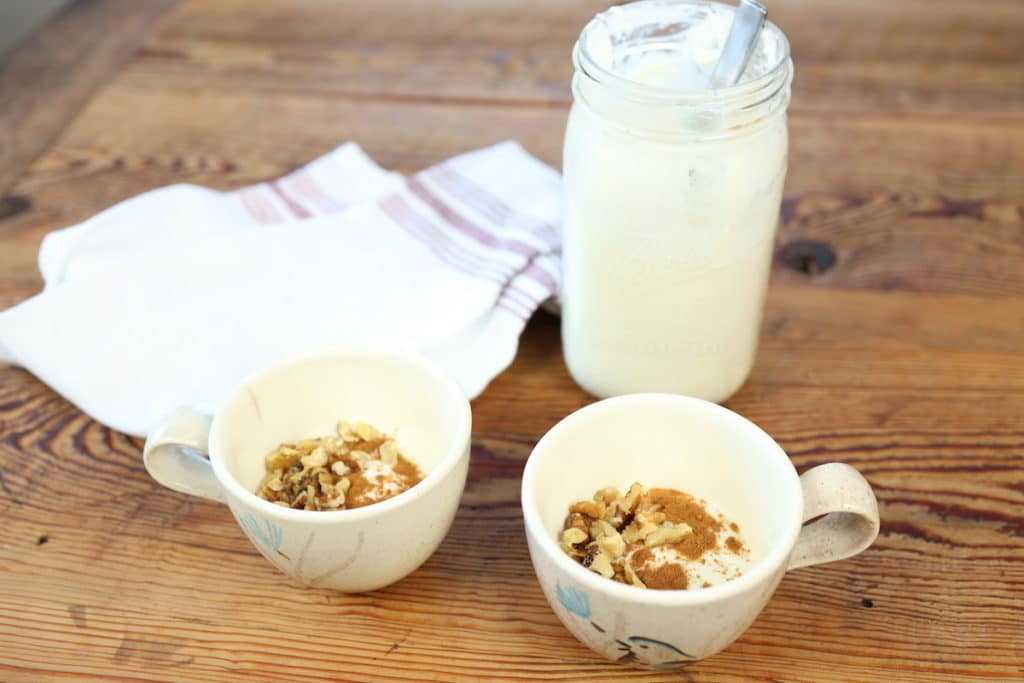
I usually buy fruit flavored or vanilla yogurt instead of plain yogurt?
You can easily add your vanilla extract, honey, maple syrup, or fruit puree to create your own flavored yogurt with much more nourishing ingredients and likely way less added sugar.
How to serve yogurt?
At least someone in our house is having yogurt for breakfast every morning! Our favorite ways to serve it are with a scoop of applesauce, elderberry syrup, or a homemade fruit puree. Alternatively, fresh fruit or nuts with a dash of cinnamon makes a lovely parfait for breakfast or as a snack. Plain yogurt also is a perfect substitute for sour cream.
How long does yogurt last?
Because it’s fermented, your yogurt should last for up to one month just fine in your refrigerator. However, if you plan to use your last batch of yogurt as your starter culture, you should make another batch within one to two weeks. The longer you wait between batches, the weaker your cultures will be. The more frequently you make it, the stronger those cultures will be.
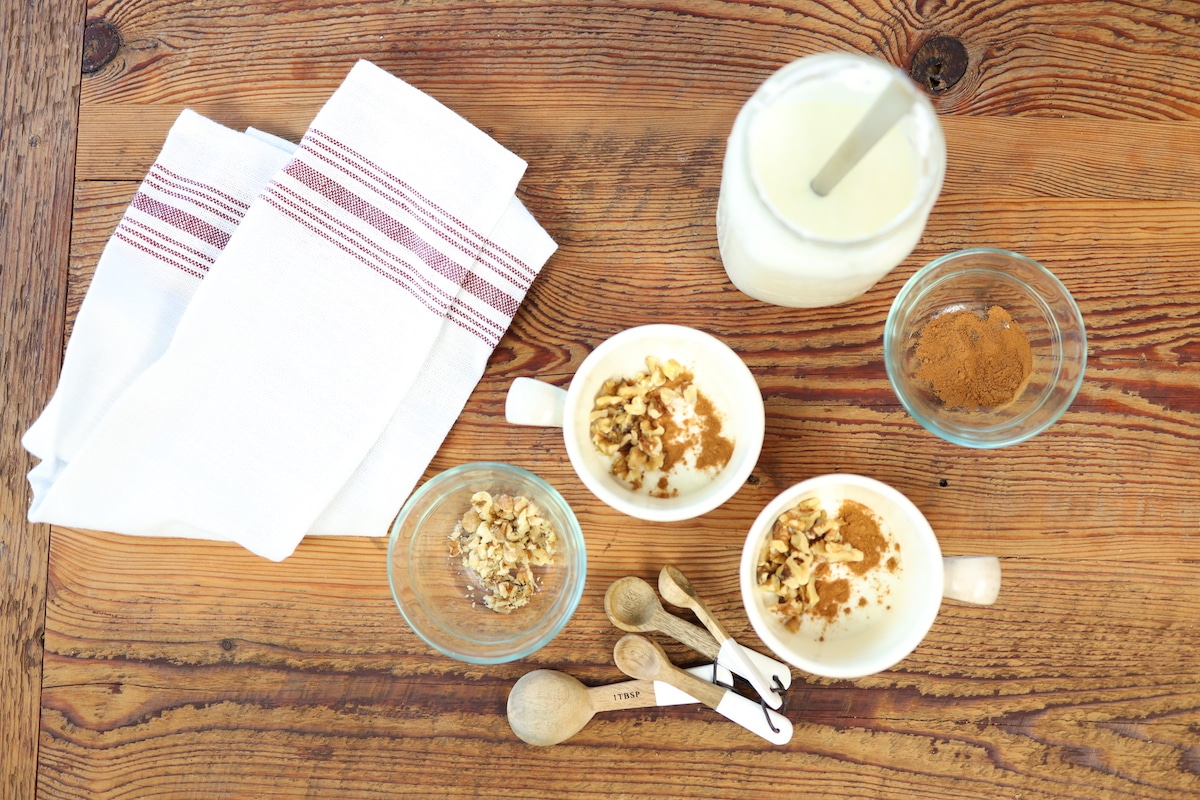
What if I skip a step, or my yogurt is still liquid and doesn’t turn into yogurt?
This has happened to us usually when I wait too long between batches and my starter culture has weakened. Most likely, your milk will still have that fermented milk smell and be totally fine to eat. In this case, we use it as buttermilk in cooking, baking, or smoothies. It’s a great chance to pick up a new starter culture and start again! If you forget about it and it develops any sort of mold or smell other than that fermented milk/yogurt smell, use it to water some plants or compost and start again!
How do I make a thicker, Greek style yogurt?
This is done by straining off the whey from your yogurt. When your yogurt is finished you can strain off the whey with a strainer/cheese cloth.
Crock Pot Yogurt Recipe
Ingredients:
– Half-gallon of milk (whole and organic recommended but any dairy milk will work)
– ½ cup starter culture (either ½ cup of yogurt from your previous batch or ½ cup store bought yogurt with the only ingredients being milk and live and active cultures)
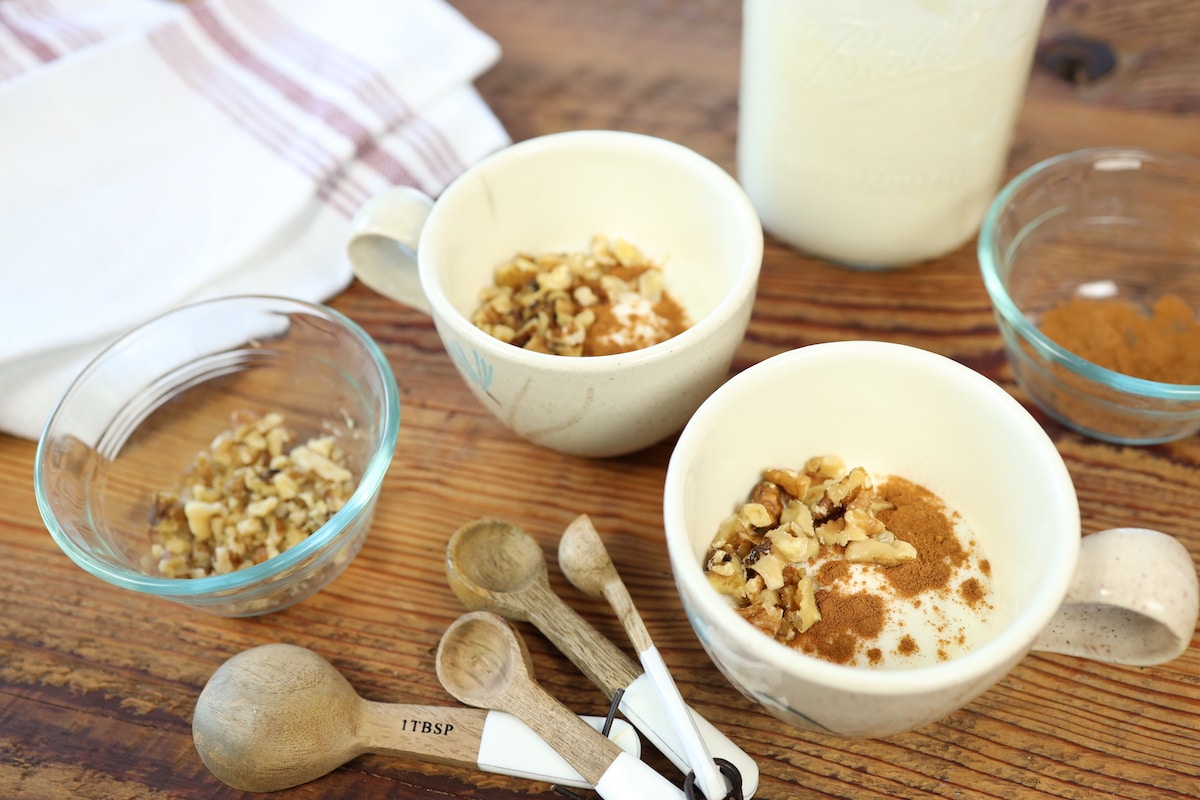
Directions:
- Pour half-gallon of milk into crock pot and turn on LOW for 2.5 hours.*
- After 2.5 hours turn off/unplug and let sit undisturbed for 3 more hours.
- After 3 hours, remove lid and quickly stir in ½ cup of starter culture. Replace lid and wrap with a couple of towels to insulate.
- Let sit for 8-10 hours or overnight.**
- Store in mason jars or container of choice in the fridge.
Serve and Enjoy!
*I like to set a timer for the 2.5 and 3 hour-intervals. For example, if I start my yogurt at 3 pm, I set a timer for 5:30 pm and 8:30 pm. At 5:30 I turn my crock pot off and at 8:30 I stir in the ½ cup of yogurt and insulate with towels.
**My favorite way to do the timing of yogurt is to either start my yogurt early in the morning and then the yogurt will be finished before going to bed that night. Or, beginning my yogurt in the afternoon and it will be finished when I wake up the following morning.
Check out more of our favorite home dairy recipes:
- The Best Vanilla Raw Milk Ice Cream
- How to Make Butter from Raw Milk in a Blender
- Easy Farmhouse Cheddar Hard Cheese Recipe
- How to Make Quick & Natural Mozzarella Cheese with Vinegar
- How to Make Cultured Cream
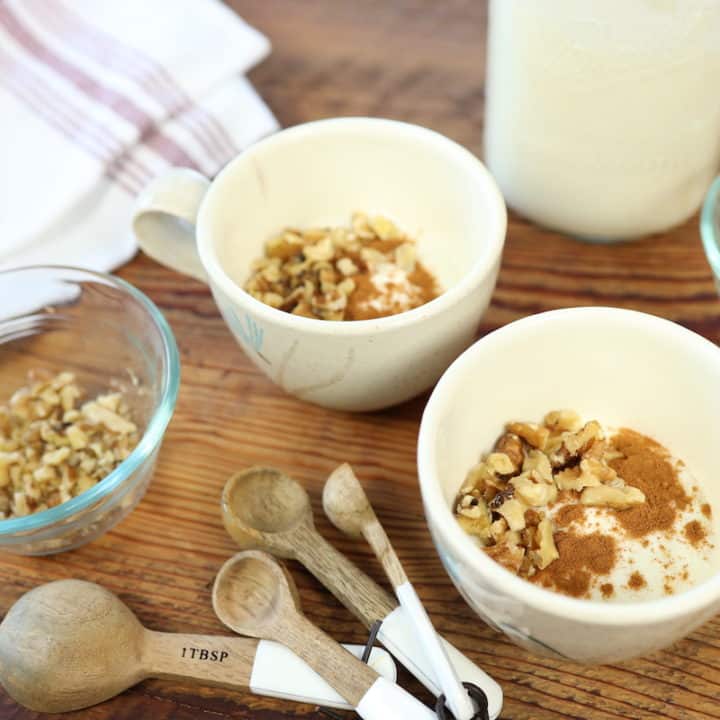
Easy Homemade Yogurt in the Crockpot
If you are looking to increase the repertoire in your from scratch kitchen, yogurt is a great place to start. This highly nourishing, probiotic rich food is so simple to make. It requires only two basic ingredients, a crockpot, and a few minutes of time. Give this easy, homemade yogurt a try and you will never want to go back to buying it at the grocery store.
Ingredients
- half-gallon of milk (whole and organic recommended but any dairy milk will work)
- ½ cup starter culture (either ½ cup of yogurt from your previous batch or ½ cup store bought yogurt with the only ingredients being milk and live and active cultures)
Instructions
- Pour half gallon of milk into crockpot and turn on LOW for 2.5 hours*
- After 2.5 hours turn off/unplug and let sit undisturbed for 3 more hours
- After 3 hours, remove lid and quickly stir in ½ cup of starter culture. Replace lid and wrap with a couple of towels to insulate.
- Let sit for 8-10 hours or overnight.**
- Store in mason jars or container of choice in the fridge.
Notes
*I like to set a timer for the 2.5 and 3 hour-intervals. For example, if I start my yogurt at 3 pm, I set a timer for 5:30 pm and 8:30 pm. At 5:30 I turn my crock pot off and at 8:30 I stir in the ½ cup of yogurt and insulate with towels.
**My favorite ways to do the timing of yogurt is to either start my yogurt early in the morning, and then the yogurt will be finished before going to bed that night. Or, beginning my yogurt in the afternoon and it will be finished when I wake up the following morning.
Pin it for later!
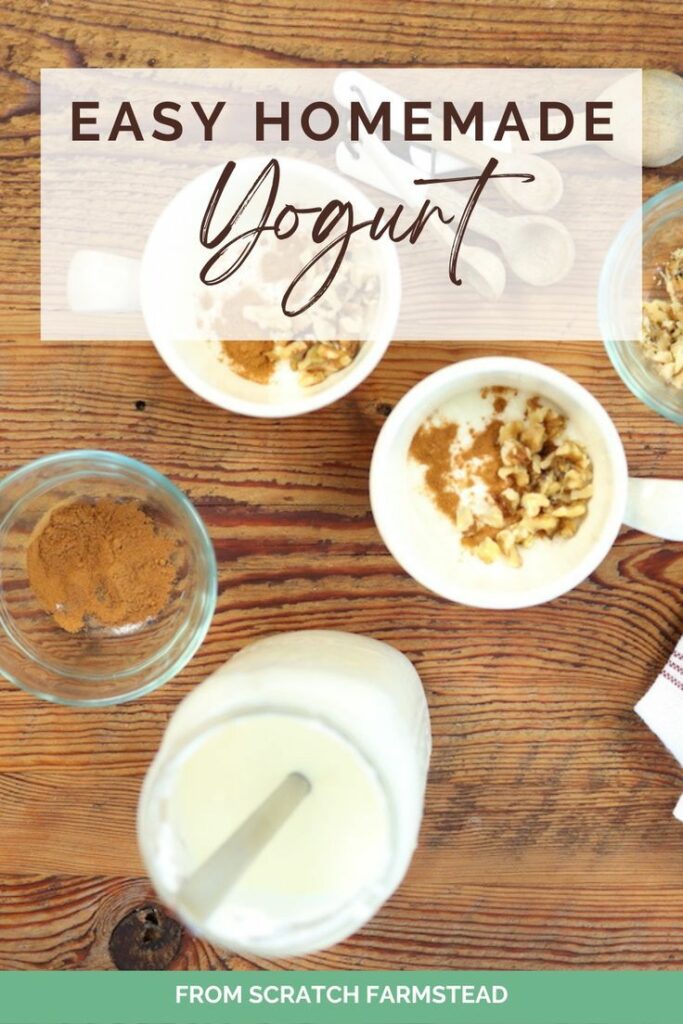

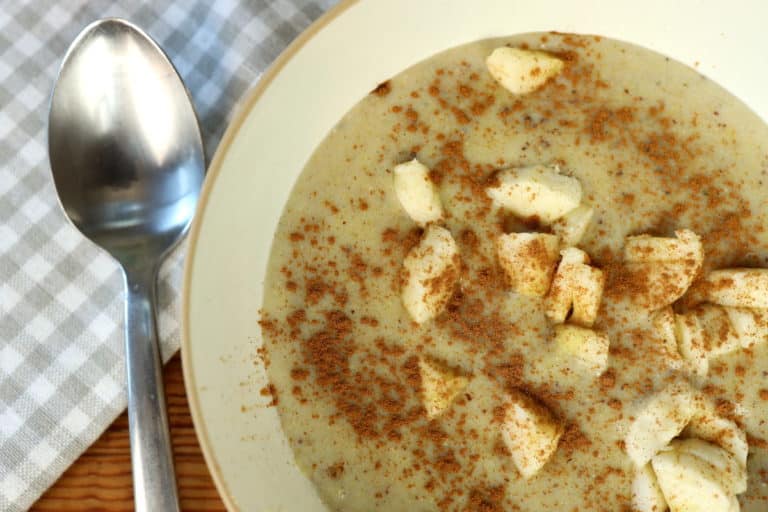
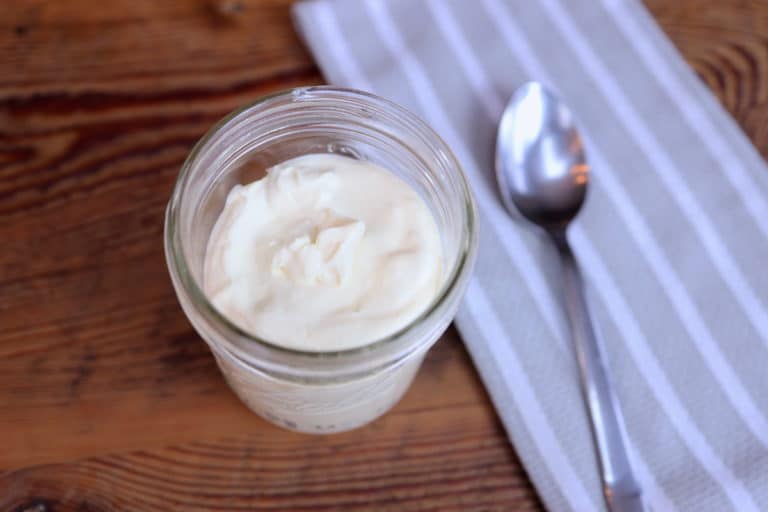

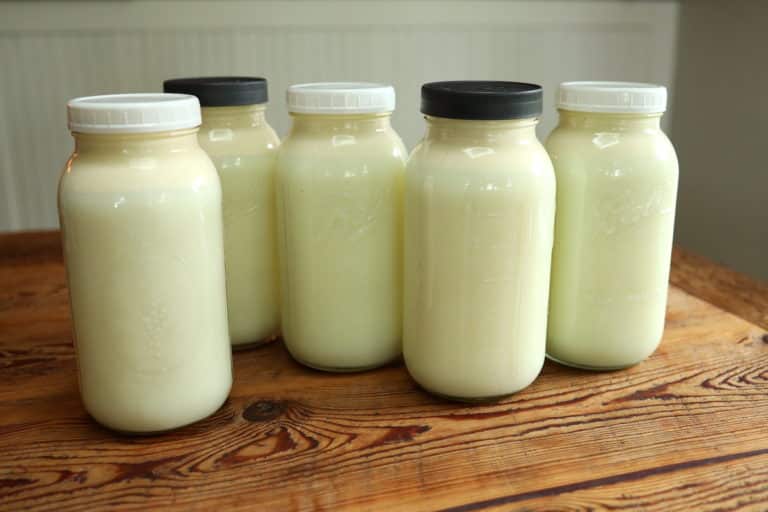
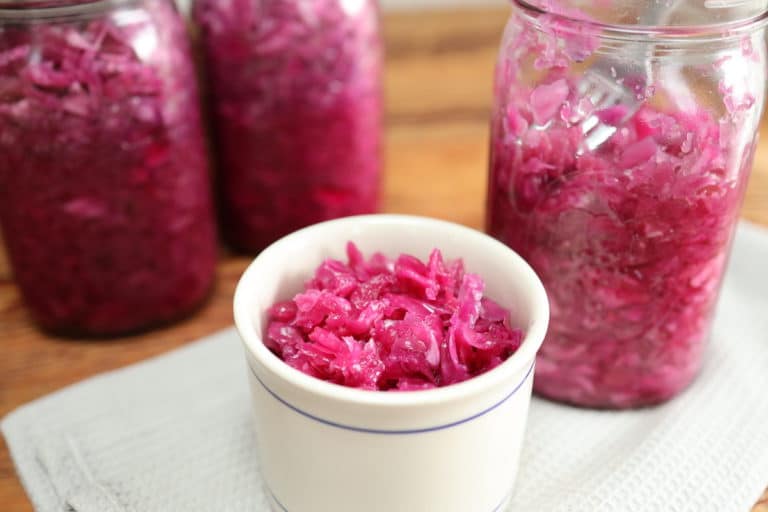
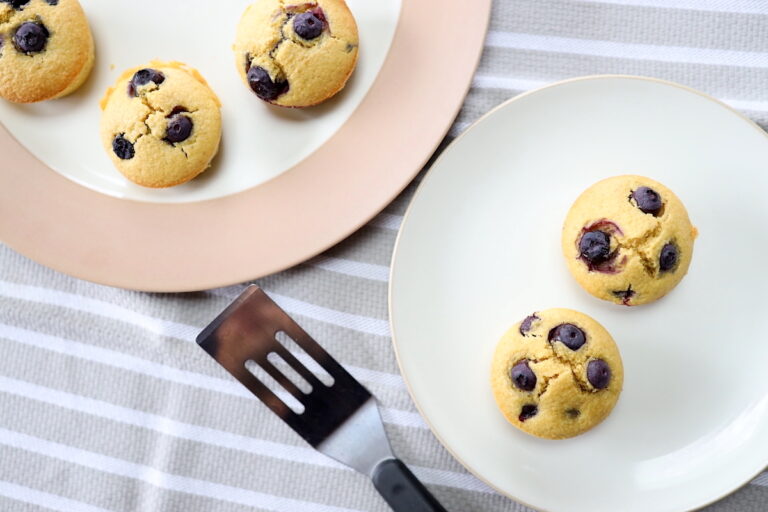
How long does the yogurt keep?
It should keep in the fridge for up to a month. But, if you are using that batch as your starter for your next batch, I’d make again within 1-2 weeks.
Have you ever done this with raw milk? If so, does the heat with the crockpot on low kill the enzymes in raw milk?
Yes, we do make it with raw milk. And yes, you do lose some of the enzymes in the process. But you do get a lot of added probiotics from the culturing process. This is a thermophilic cultured yogurt (heat loving) so it needs heat to be activated. This type of culture results in thick, creamy yogurt. If you do not want to heat the yogurt, you can use a mesophilic culture to make the yogurt. The texture is thinner and runnier but you maintain all the enzymes this way. Another option to avoid heating is to make milk kefir. We like to do both this yogurt and kefir to get the best of both worlds! Hope that helps!
Thank you so much for the recipe and for your site! I appreciate all your posts so much as my family is just starting on this homestead journey! I just tried this recipe and it turned out great!! But I was wondering if I could cut this recipe in half and it still work? Not sure if it would mess up the timing or anything. It’s only me and my husband eating yogurt and it’s a little too much for just us to eat haha! Thanks so much!
I’m so glad it turned out well for you! I’m afraid that only a quart of milk would mess with the timing. What you are going for is heating to an initial temperature of around 180 degrees and then cooling it down to around 110-115 before adding your culture. If you give it a try, I’d use a thermometer to check temperatures along the way to see how long it takes to get to the temperatures you want for that amount of milk. Hope that helps! I’d be curious to hear your results if you try it!
Hey there, Joelle! Thank you for taking the time to share this with the rest of the world. We appreciate it so much. I have made several batches of yogurt and love it. Should it get more of a tangy/sour flavor with each batch? My very first batch was creamy with minimal sour tanginess to it. With each batch that has followed, it has gotten more of that sour/tangy yogurt flavor. We like either and will eat it no matter what. I was just curious as to what makes it less tangy and more tangy? This last batch actually resembled large curd cottage cheese until I took a whisk to it. Do you know what causes that?
Thanks so much for your time.
Jena
Hi Jena! Thanks for your comment! How long are you going between batches? The thing that comes to mind is that the starter can start to weaken over time, especially if a new batch is not made within a week to two weeks at most. Now, we make yogurt at least once a week so I haven’t had this happen in a while but when we used to not make it as regularly, it would often be thick and creamy for the first few batches and get thinner over time. When that happened, I’d usually just get a new container of yogurt and start over again. That’s interesting about the sourness. I’ve only ever had that happen when I’ve forgotten to put it in the fridge and let it sit on the counter for a little too long (over 14 hours). I hope this helps!
Thanks Joelle! I usually make yogurt atleast once a week because it’s our family’s favorite snack and we use it for smoothies too. You might be right about the sourness. I have 4 kids, age 6 and under, so from time to time, I get caught up in the daily duties and sometimes I don’t put it into the fridge right away. I just started over with a new container of yogurt and this first batch was delicious and creamy. Does the kind of milk have anything to do with it? The lady I usually buy milk from has Brown Swiss cows. But this batch of yogurt that turned out differently came from an Amish friend and she has a Jersey cow like you guys do. Thanks for the help!
Hey Jena! I’m so glad that the fresh batch came out good for you again! I do think the kind of milk/diet and environment of the cows can definitely play a role. I notice the biggest difference in her milk/cream from summer to winter when she’s fed fresh grasses vs hay. There will also be differences in the milk produced by a brown Swiss vs a jersey cow, not bad just different! I find it so fascinating that since raw milk is a living thing, these things will make so much more of a difference than in pasteurized milk! Hope that helps and sounds like you are doing an amazing job with you’re family! Keep it up, Mama!! 🙂
hiya i’ve just made my first batch! how fun and magical.
being used to processed foods and use by dates, I’m a little paranoid of giving my family food poisoning. Have you ever had an issue? I’ve just tried my match and it does have a bit of a tangy flavour but as i’ve never had unsweetened natural yoghurt before i’m not sure whats safe. I don’t think i have the confidence to store it for up to a month but then again this will get eaten quite quickly 🙂 so can i just check, basically set some of this batch aside to make my next batch?
Awesome! Yep, plain yogurt is a bit tangy and you could always add a fruit puree, honey, or maple syrup to sweeten it up a bit! We’ve been making this for almost a decade with no issues. And Yes, you can just use a 1/2 cup of this batch for your starter in your next batch! Way to go!
At what stage do you add the flavoring?
Hi! After it’s all finished you can add fruit or honey or whatever you’d like. If you want to use this yogurt for your next batch though, make sure to set aside a 1/2 cup unflavored to use.
Thank you so much for this post! I tried it last night and started straining off the whey when I woke up – a total of 4 hours. The end result is creamy deliciousness. Years ago I would eat fat free, plain Fage brand yogurt with some fruit and granola and liked it, but this completely blows that out of the water. I honestly can’t believe how good it tastes even all on its own. My only gripe is that I got about 28 oz of yogurt from a half gallon of milk. Next time, I’m going to try only straining for 2 hours to see if that yields more yogurt. I’m hesitant to leave all of the whey in it because I’ve read that that can contribute to a more sour flavor and I’m loving the flavor of this batch I’ve made, haha. Any input on the flavor of the whey being left in as opposed to straining?
I’m so glad you liked it! Instead of straining the whey, I usually use a ladle and scoop out what whey I can and leave the rest. It leaves a much larger amount of yogurt but is not as thick as greek yogurt texture. We’ve just gotten used to it that way so I don’t mind the texture or notice a more sour flavor. I’d be curious what your yield would be after straining for 2 hours instead of 4. It may just take some playing around with to see what works best for you!
I followed the recipe exactly and it’s still pure liquid after sitting overnight for 10 hours. Any idea what I did wrong?
I’m so sorry for my slow response! Ok, when I’ve had this happen before, it’s always been because my starter culture wasn’t fresh enough (only 1-2 weeks old if used from a previous batch or as fresh as I could find if from the store) or it was bought from the store and contained additional thickening ingredients instead of just the milk and cultures. Any chance either of those was the case. My other thought is that maybe the temperatures on your crock pot might be different or something to do with timing and temps?
How/where do I get or make a starter culture?
I just use plain yogurt from the store as a starter culture – whole fat plain greek yogurt is my preference. Just make sure it doesn’t have any added thickeners like pectin or other additives, only milk and live and active cultures on the ingredient label.
Can I just do this method on stove if I leave it on the small simmer burner? I don’t have my crockpots anymore. How would you start culturing for yogurt? I was going to use the stonyfield whole milk but found it has pectin.🫤
Yes! There are definitely other ways to do it. The gist is heating it to a certain temperature and then letting it cool, adding your started and letting it culture in a warm environment. I’m sure there are recipes out there that heat the milk on the stove. I like using greek yogurt for my starter culture if I buy it from the store, those usually don’t have pectin (but still definitely check the ingredients). Hope this helps!!
Can I insulate the crock pot liner instead of the whole crock
pot?
Yes! That should be fine!
Your recipe was super easy to follow and mine turned out wonderful! I’m about to make a second batch it was so good. Thank you so much!
Wonderful! So glad to hear this! Thank you for sharing!
Hi there. When adding vanilla for example, how much or how do you add it? 🙂
Hi! After your yogurt is finished, add whatever you’d like – a tsp of vanilla extract and honey for example or a fruit puree. Just make sure you reserve a 1/2 cups of plain yogurt for your next batch if you plan to make more!
Hello!! I just made my first batch of yogurt. I was on time for each step and let it sit for 10hrs overnight. My end product was a creamy liquid, with some larger more thick blobs. Is this how your yogurt comes out? Any tweaks I could make? Is this still okay to consume? Thank you!!
Hi! It will definitely still be fine to consume. If it’s not ideal as a yogurt you can always use it as buttermilk or for smoothies. I’ve found that actually adding slightly less than a half cup of yogurt starter tends to lead to a thicker, creamier texture. Adding too much starter can cause the bacteria to compete and not work as well.
I have dairy goats. Do you know of anyone using this recipe using hoat milk? Before I got my dairy goats, I was buying raw cow’s milk making the yogurt on the stove and never had an issue. Made a batch with goats milk and was runny. Want to try again, but don’t want to waste anymore milk.
Hi! Good question. I’ve never experimented with making this with goat’s milk. In my experience with cow’s milk, how thick or runny mine is dependent on the strength of the culture I’m using over the milk. Hope this helps!
I am looking forward to making your yogurt! I have my own milk cow that we just got. I normally remove the heavy cream before we drink it. I have been having about 1/4 of my 1/2 gallon be cream. Should I make the yogurt with the cream in the milk or take it off before using it in the yogurt? Thanks in advance for your help!
You could do either. I usually skim off some but not all of the cream before making yogurt. It will work either way though! Enjoy!
Hello! I am excited to try your recipe! My only question is do you leave the crockpot on the counter over night or do you put it in the fridge?
It stays out on the counter wrapped in towels for the last 8-10 hours to let it ferment. Then put it in the fridge afterward!
Thank you for the great recipe! I’m trying it out right now. I usually just do it in the oven in jars with just the light on (and not preheating the milk) so I don’t heat it too high to lose the enzymes, but my son can’t handle the runny/lumpy texture, so I have high hopes for this!
We go through a lot of yogurt, do you think I could double the recipe?
Thanks!
I hope you like this one! I’ve only tried it in these proportions in the crockpot. You’d need to adjust the times if you were going to double it so that the temps would be correct.
Can you freeze yogurt? Does it freeze well and still good to eat when thawed?
Hi Rachel! I haven’t tried freezing it personally. However, others have shared that freezing has worked well for them, especially when using it as a starter for the next batch (not sure about the texture for eating).